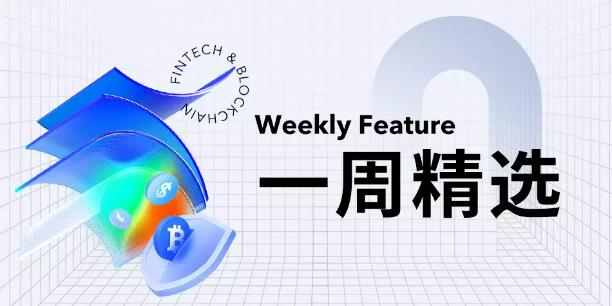Opinion Blockchain with paid usage will never achieve large-scale adoption.
Paid usage will hinder large-scale adoption of blockchain.Author: Jon Rice, Cointelegraph; Translation: Song Xue, LianGuai
Pay-to-use blockchain is now a reality.
Of course, it’s not for us – the despised cryptocurrency crowd. We’re more than willing to open our wallets, engrave mnemonic phrases on steel cards buried underground, find unblocked exchanges, package assets to maximize returns, and become OpSec professionals.
If permissionless blockchains are to become the backbone of our online experience, three major changes need to happen:
- Comparing the current regulatory status of stablecoins in various countries and looking forward to future policy trends
- Opinion The blockchain industry is transitioning from narrative logic to application logic.
- Innovation of Application Chains Can Mesh Security revitalize the Osmosis ecosystem?
They need to be free.
They need to be unobstructed.
They need to be familiar.
“Free” means users don’t have to pay, “unobstructed” means it’s as easy as opening an app or playing a video game, and “familiar” means we need to stop expecting ordinary people to change their behavior to accommodate the limitations of our technology.
Right now, none of these aspects are in place. In fact, we’re so far from where we need to be that we haven’t even attempted to seriously address these issues – we’re busy making incremental improvements to dysfunctional technology instead of addressing the root causes of dysfunction.
Free to use
Layer-1 blockchains are designed and built by people who believe their value lies in directly monetizing users.
This is a fallacy.
Google provides you with ads, indirectly making money off you. Facebook profits from your data but doesn’t charge you to use its platform. Apple’s App Store takes a 30% commission from developers and publishers, not from you.
In all cases, you’re paying – just not with cash.
Google has 85 billion monthly visits. If it were to monetize directly by charging one-tenth of a cent for every visit to its homepage, theoretically, it could generate $85 million in revenue per month.
But it doesn’t do that because the number of people willing to pay cash for the Google experience is minuscule compared to those willing to provide them with ads.
We’re accustomed to indirect monetization. However, current blockchain protocols force us to accept direct monetization by requiring us to pay gas fees for every transaction.
One of the most exciting premises of Web3 is that it creates the possibility of a consistent incentive for creators and consumers. Countless non-fungible token (NFT) creators have found ways to build communities around such incentives, but Layer-1 blockchain builders are just repeating the same thing over and over again.
No matter how small their fees may be, most people still won’t pay them due to the gradual reduction by companies like Solana or countless Layer 2 solutions.
Unobstructed and simple
We’re not very loyal to our apps. About 77% of daily active users abandon Android apps within three days. It is estimated that 25% of all downloaded apps are abandoned within minutes due to poor onboarding.
Andrew Chen, a partner at Andreessen Horowitz, which invests in gaming, metaverse, and consumer technology, shared the following image. He suggests, “The best way to change the retention curve is to target the first few days of use, especially the first visit.”

Average retention curve for Android applications. Source: Andrew Chen/Quetra
Comparing the onboarding process of poorly designed applications with the onboarding process of cryptocurrencies. It might be terrible, but they are not even the same sport. Cryptocurrency is the least user-friendly technology in history. For those who struggle with technology, it’s like being repeatedly slapped in the face in the digital world.
Over time, cryptocurrencies have not become more user-friendly.
Therefore, blockchain must change. It must become a frictionless experience, a background technology, just like everything else we use— from the internet to our phones to our televisions.
We don’t care how they work. We only care if they are effective.
Familiar and Interesting
Finally, perhaps my biggest criticism of the cryptocurrency industry is how indifferent we are to asking billions of people to do things they don’t really want to do.
Cryptocurrencies are not good at creating decentralized social media alternatives to Facebook. They are not good at creating unique gaming experiences. They are not good at replacing traditional supplier-user Web2 models with collaborative incentive Web3 models.
They are good at monkey pictures, scams, Twitter debates, and speculative trading.
This is not to say that cryptocurrencies are useless—they are definitely useful. If we stop replicating the initial necessities that made cryptocurrencies necessary in the financial system and inequality, the economic models supported by cryptocurrencies will eventually be seen as a decisive shift in power structures and individual autonomy.
But the premise is that we need to make it as easy to use as opening an application or clearing a level in a game, because that is the actual need people have in real life.
All of this is stupid, impossible, wishful thinking—right?
None of this is impossible.
We just got used to believing that it is because some people have become very, very wealthy by promoting niche blockchains that are paid to use in the market.
Ethereum is a great innovation, and it will continue to serve as the foundation for decentralized finance precisely because it is secure, decentralized, and slow to develop. However, it will not completely change the game because gamers will not pay gas fees.
Solana is great for NFTs and may even be applicable to stablecoins, but it is not suitable for smart cities or the Internet of Things.
The blockchain industry needs to acknowledge that we are hindered by the following basic facts on the path to becoming the foundation of consumer technology:
-
People don’t want to pay for things that should be free.
-
They don’t want to do things that should be easy but appear difficult.
-
They don’t want to change their behavior to fit our worldview.
The earlier we build protocols and applications that accept these realities, the sooner we can suppress critics and change the world.
We will continue to update Blocking; if you have any questions or suggestions, please contact us!
Was this article helpful?
93 out of 132 found this helpful
Related articles
- Understanding Farcaster, the decentralized social network strongly promoted by Vitalik’ OR ‘Understanding Farcaster, the decentralized social network strongly advocated by Vitalik
- Traditional institutions are eager to try, and RWA is finally taking off.
- Ghost in the Blockchain International Top Hacker Organization Steals Digital Assets Worth at Least $1 Billion
- Why build Onchain Realities?
- The Cryptographic Mars in LianGuairadigm’s Eyes Speculation, Pioneering, and Gambling Tables on the Blockchain
- Reflections on Shanghai Blockchain Week Mainland Web3 Walks in the Sunshine, While Darkness Crawls
- Evening Must-Read | The Future of Blockchain in China






